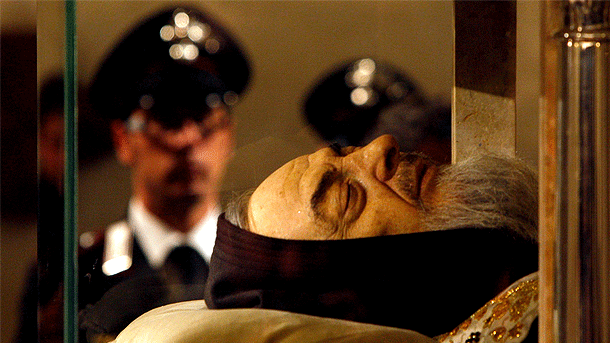

Padre Pio- A Life of Gratitude
Salt + Light Media
Tuesday, September 23, 2014

The following post was originally published on Sept. 2008 by Matthew Harrison.
One of my earliest recollections of encountering the life of a saint was a biography on St. Pio of Pietrelcina, or Padre Pio as he is more commonly known. Though I don’t remember the title, I can vividly recall my mother reading the book to me as a young boy. I was captivated by it — hanging on every word as she described the saint’s miraculous life.Since that time, I have had devotion to the holy priest. He’s like an old friend — not a saint that I gush over, but a reliable buddy who I know I can turn to. When his feast day roles around, every September 23rd, I’m filled with a certain sense of excitement as I recall the holy friar and how he has hung around my life.As I was thinking about the good Padre this year it occurred to me how special, and rare that he is. It seems that in every age God chooses certain people to use as a more tangible and evident instrument of his love and mercy. People whose supernatural connection seems a little more clear — who may be granted special gifts or graces. Padre Pio’s experience of bi-location and the stigmata come to mind.I was amazed as a child (and still am!) by the stories of his bi-location. As a child I was kind of hopeful it was a skill I would develop at school. Sadly, it didn’t quite make it into the curriculum.His stigmata was fascinating to me as well. As a little boy I regarded it as a special privilege but at the same time found the idea of constant bleeding wounds to be scary. I certainly didn’t comprehend at the time the pain that he must have experienced — not only physically but even emotionally by those who labelled him a fraud.Recently, Zenit published an article, as did Catholic News Agency, on a new book that explores Padre Pio’s stigmata. It’s amazing to consider the encounter that he had with the crucified Christ and the humility that he treated the special grace with.What stands out in particular for me is what the crucified Christ said to the Italian Saint: “He was lamenting the ingratitude of men, especially those consecrated to him and favored by him.”It makes me think…Many times I have been ungrateful. Many times I have climbed down from the cross and run away.Chances are I will never be invited to share in Christ’s sufferings in the same manner that Padre Pio was. However, I can still share in Christ’s sufferings in what I offer to God day in and day out.Most of all, I can live a life of gratitude, for the blessings in my life, and for the unfathomable love and mercy of Him who loved us first.… just as I was impressed with him as a young child, the lessons of Padre Pio still resonate with me today!St. Pio of Pietrelcina, pray for us!
Related Articles:
<<













